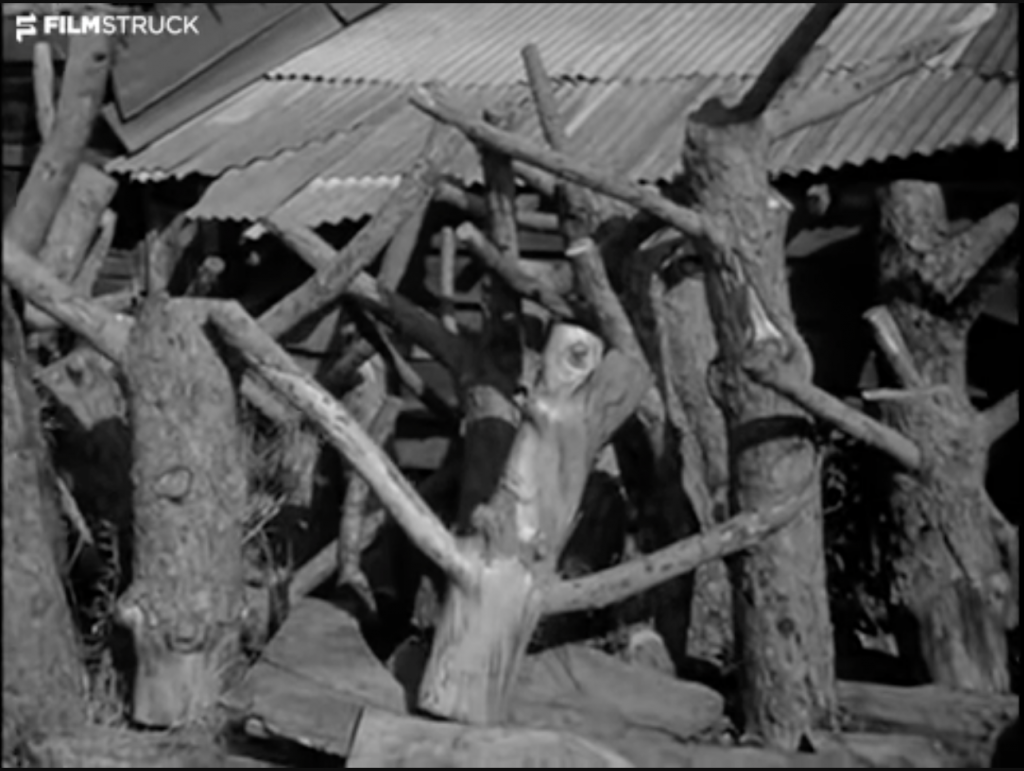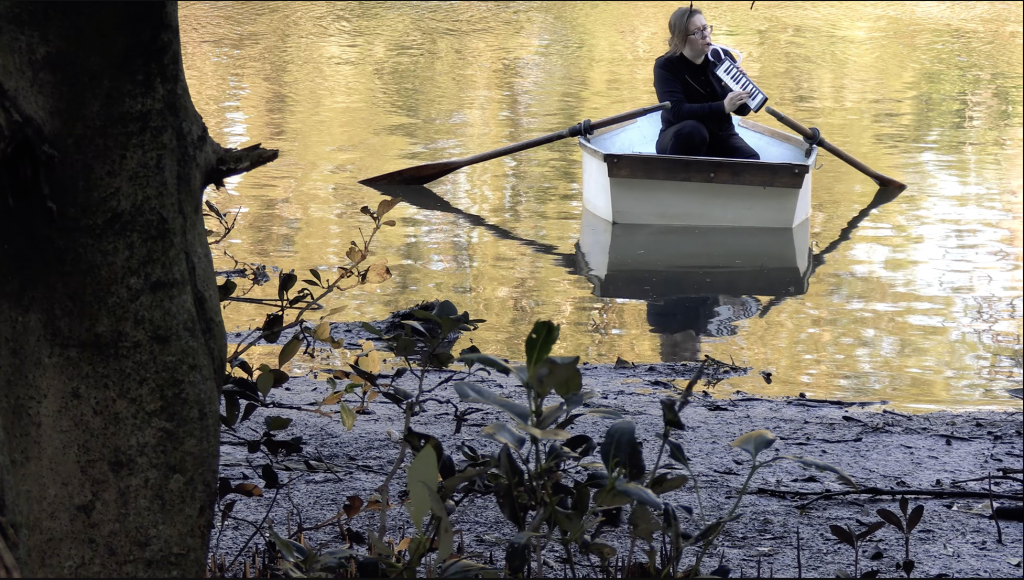
Journal of Embodied Research’s special issue on
Ecologies of Embodiment 5.2 (2023)
https://jer.openlibhums.org/article/id/9823/
Co-edited by Raffaele Rufo, Doerte Weig, and the vegetal Wood Wide Web spanning from the pines and oaks of the Roman coast (Italy) and of Barcelona (Spain) to the mabé trees of the Ivindo Region (Gabon) to the mangroves of Sydney (Australia) and the cedars of Ontario (Canada).
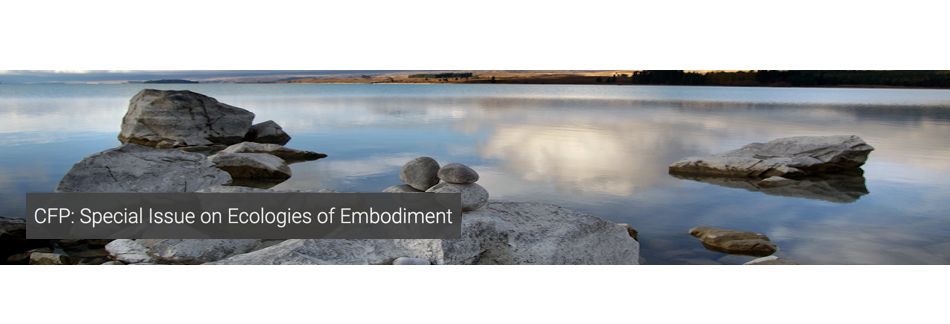
Video-essay
Video-essay title: What the River Doesn’t Say About Itself
Author: Daniel Portelli
Link to journal publication: https://jer.openlibhums.org/article/id/9823/
Version of video-essay without words https://youtu.be/P5Ys_GZzdds (just the music and environmental sounds):
Limelight Article (Cutting Edge): https://danielportelli.com.au/wp-content/uploads/2023/09/Cutting-Edge-Limelight-Portelli.pdf
Short Abstract:
A co-composition with mangroves and with members of The Music Box Project. This project inquiries into the relationship between cinematic art and how we experience ecology, engaged through concepts of the dispositif, opsigns, sonsigns, heterotopic coupling, and other deep embodiment practices.
Full Abstract:
Along the river surrounded by branches and root systems of a mangrove forest, musicians drift on a boat performing music and engaging in eco-acoustical awareness, sensory activation, and perceptual openness as a form of forest therapy. The project is inspired by the film La Pointe Courte (1955) by Agnes Varda, set in a small fishing village, along with Varda’s film concept the ‘imagination of materials’ where the musicians on boats like characters in a film are given names and personalities that embody one aspect of the mangrove: pneumatophore, rhizophora, microalgae, and vivipary. The performers filter their experience of the living system through the lens of other cinematic art concepts and techniques to challenge their subjectivity, such as the dispositif, the eco-apparatus (Foucault, 1994; Parente and Carvalho, 2008), noosigns, opsigns, sonsigns (Deleuze, 2005), l’imagination des matières (Varda), and a biological ‘automavision’ (Von Trier). This is derived from a post-phenomenological perspective (Ihde, 1993), regarding the impact of cinema and the whole mediascape on people that subsequently affects the environment.
The boat is central to Foucault’s argument for understanding heterotopias. As a ‘displaced place’, the sailing vessel becomes for Foucault a kind of mobile here and now that others itself to the world as it is (Stanger, 2016). The body is also a heterotopia as they are both moving spaces capable of inhabiting spaces of otherness. In my work, the performers combine two unexpected heterotopic spaces: ‘mangrove’ and ‘cinema’. The combinations of boat, body, instrument, living system poetically forms what I call ‘heterotopic couplings’. The changing boat orientations randomised the performers’ framing of a scene, as they scanned the shoreline to interpret mangrove root systems. Scored elements invited further head movements beyond the performers control such as changing their fields of view that was determined by a random number generator. This encouraged them to look at particular points in mangrove which they may not have looked before. The result is revelling in the somatic effects of bodily earthly sounds. I use the term ‘biological automavison’ based on a camera technique by director Lars Von Trier that is subverted into a method for navigating complex living systems.
The performers also frame their perception through counterposed ways of thinking: the focused and diffuse modes (Oakley, 2016), and through embodied processes that transcends sensory modalities, known as the supramodal (Riva, 2018). The video-essay explores how a mangrove forest can affect sensoriperceptual meaning and into the production of thoughts and sounds. Questions like: how our body matrix, peripersonal space, and bodily consciousness (Riva, 2018) affects the mangrove; how we can engage in deep embodiment practices involving motor schemas and body memories (Riva, 2018) to create a neurological binding with a wider ecology; and how can humans listen, relate, correspond, and synthesise with the articulations present within living systems. The practice of careful perception, deep thinking, and conceptual change about the mangrove aims to bring greater empathy, awareness, and attention to conservation, through higher order learning and deep embodied memory.
Keywords: mangrove forests, cinematic dispositif, heterotopic coupling
Daniel Portelli is an experimental music composer, sound artist, researcher, academic from Australia who completed a PhD in composition at the University of Huddersfield at the Centre for Research in New Music.
How to Cite:
Rivoal, D. & Portelli, D. & Goeschke, F. & Kostourou, F. & Hasegawa, T., (2023) “Ecologies of Embodiment: Video Essays II”, Journal of Embodied Research 5(2): 3. doi: https://doi.org/10.16995/jer.9823
Special thanks to:
The performers and co-composers: Elizabeth Jigalin (accordion, melodica), Joseph Lisk (trumpet), Danica Hobden (zither) who are The Music Box Project
Dr Clare Britton for lending us the boat – http://clarebritton.net/ – The boat’s name is Sally, made by Clare as a part of her PhD portfolio in fine art. See: Britton, C. (2020) A Week on the Cooks River. PhD Thesis. University of Sydney. https://www.cbcity.nsw.gov.au/arts-centre/archive/past-exhibitions/a-week-on-the-river
Author: Dr Daniel Portelli, Independent Researcher (concept, co-composer, project manager, filming, editing, voice over – was not a performer on the boat)
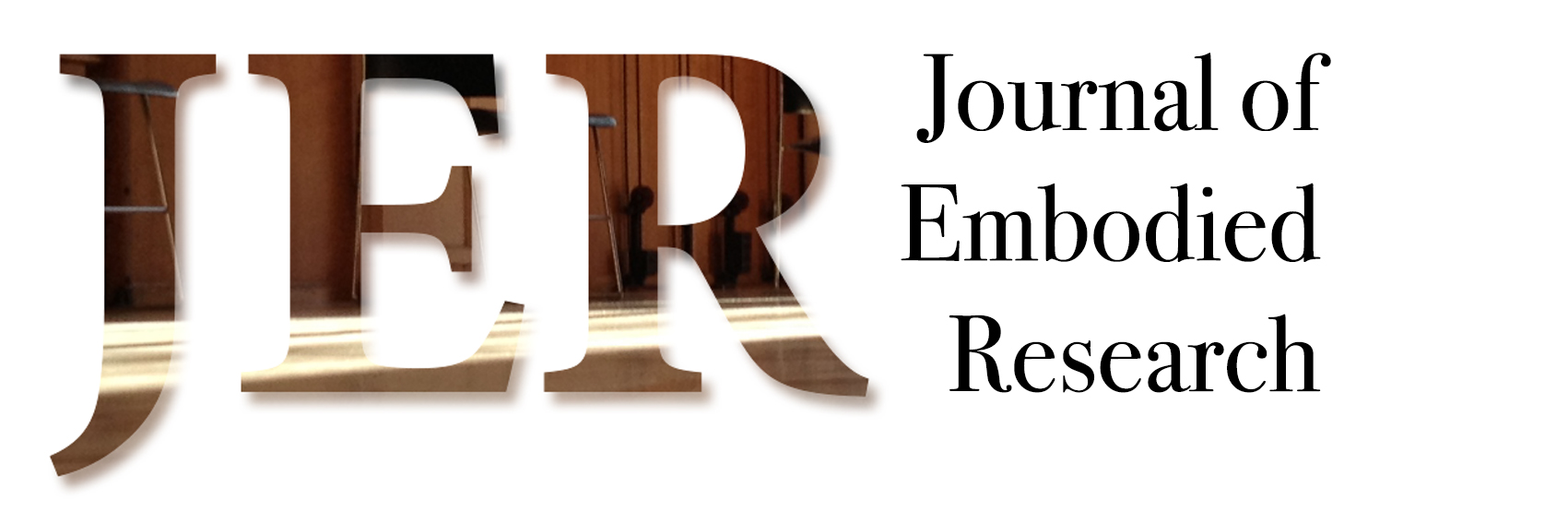
Journal of Embodied Research is the first peer-reviewed, open access, academic journal to focus on the dissemination of embodied knowledge through video. It advances the scholarly video article as an experimental form supporting diverse embodied research projects. Articles are published on a rolling basis and offer the cutting edge of videographic scholarship, innovating relationships between textuality, audiovisuality, and embodiment.
Acknowledgement of Country
We acknowledge the Traditional Custodians of the land and waters in which this work was made, the Gadigal and Wangal people of the Eora Nation. We pay respect to Elders past, present, and emerging. We recognise their continuing and intrinsic connection to the land, rivers, and mangrove ecosystems, and acknowledge that First Nations way of life has been devastated and continues to be devastated by colonisation. Sovereignty was never ceded. It always was and always will be Aboriginal land.
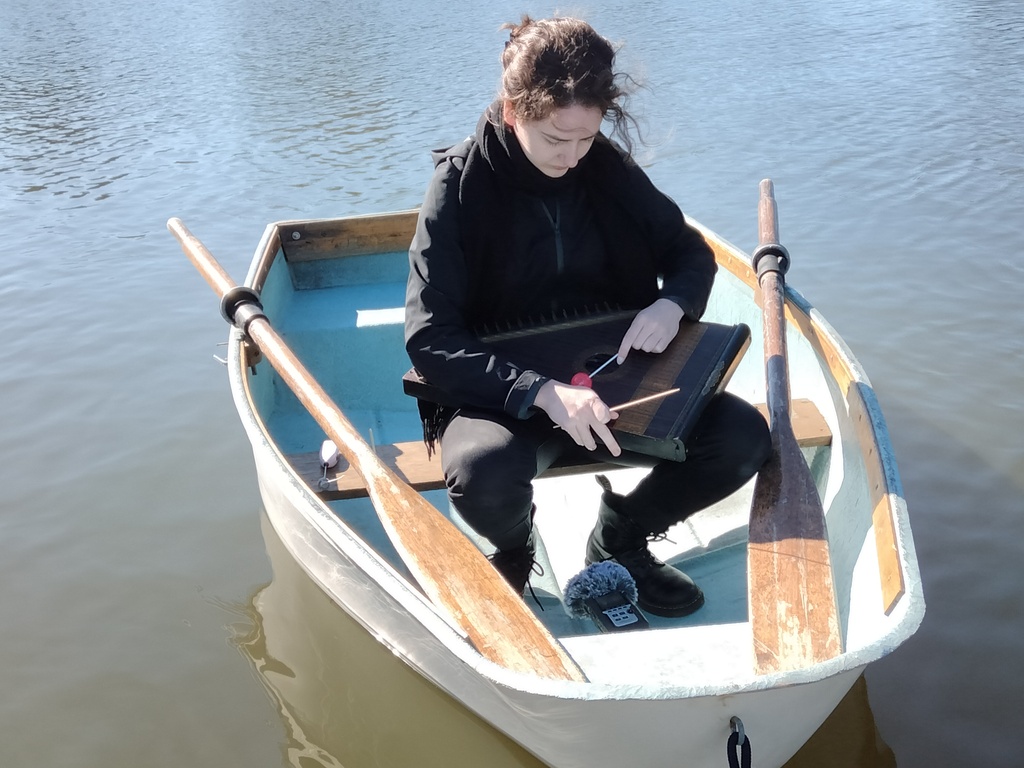
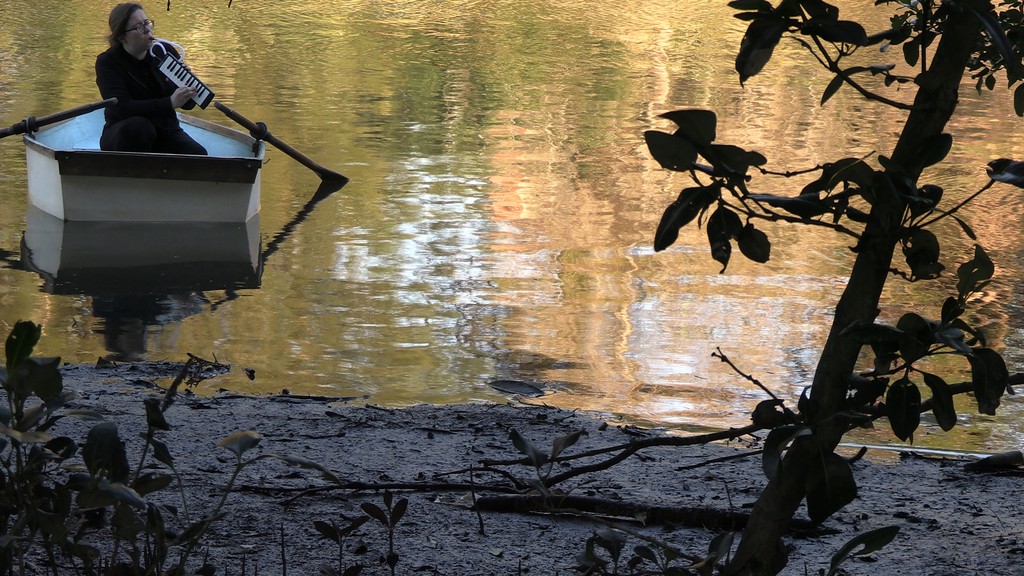
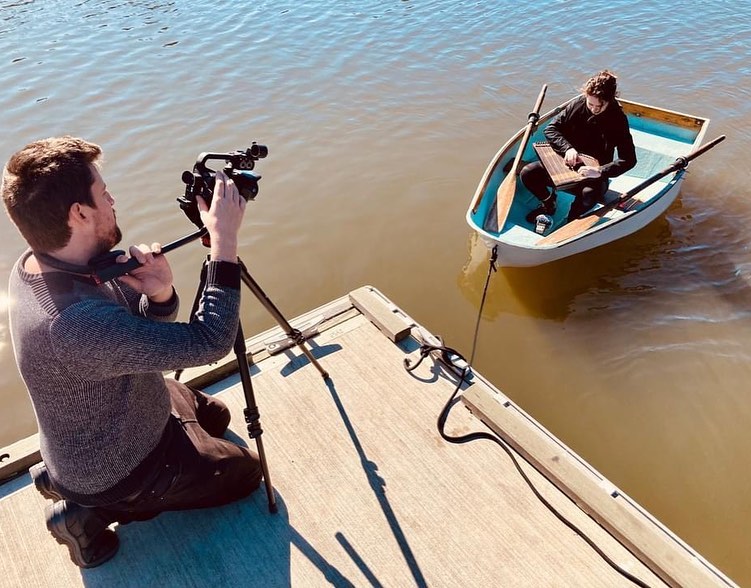
Place where the work is based: Gadigal and Wangal Country, Sydney, Australia.
We do not know the traditional First Nations name for the river as the name has been lost to history. It has been suggested that the name is Goolay’yari meaning Pelican but there is no consensus. The river continues to be called the Cooks River (Irish, 2018).
First Nations artist Jason Wing and Nathan Moran both point out how offensive it is to have the river named after Captain Cook. Inscribing colonial language into our landscape contributes to what Wing describes as the “erasure of Aboriginal history” (Milgate, 2018; Britton 2020).
Footage of the river was combined with footage of a more abundant mangrove the Badu Mangroves of Olympic Park to give the illusion they are one in the same offering a glimpse into what it may have been like before European settlement.
The same boat was used for each performer. The footage and music were combined in post-production.
References
Alongi, DM 2009, The energetics of mangrove forests. Dordrecht, The Netherlands: Springer Science + Business Media.
Chatting, Al-Maslamani, I., Walton, M., Skov, M. W., Kennedy, H., Husrevoglu, Y. S., & Le Vay, L 2022, Future Mangrove Carbon Storage Under Climate Change and Deforestation. Frontiers in Marine Science, 9. https://doi.org/10.3389/fmars.2022.781876
CloserTV – A Behind the Scenes Channel (2018) Lars von Trier’s AUTOMAVISION – A NEW SET OF RULES – a Behind the Scenes documentary. Available at:
https://youtu.be/RLIgsBkrR4Q (Accessed: 4 June 2022).
Deleuze, G 2005, Cinema 2: The time image. London: Continuum.
Foucault, M 1994, Dits et Écrits, 1954-1988, 4 volumes, Paris, Gallimard, 1994.
Ihde, D 1993, Postphenomenology. Evanston: Northwestern University Press.
Irish, P 2018, Aboriginal History Along the Cooks River. Mary Dallas Consulting Archaeologists.
Learning how to learn (2016) Learning How to Learn – Introduction to the Focused and Diffuse Modes. Available at: https://youtu.be/lJtUg-3DfUk (Accessed: 4 June 2022).
Milgate, A 2018, “Cooks River Oral Histories Project,” in The Cooks River Catchment Aboriginal History Project, ed. Cook River Alliance. https://cooksriver.org.au/oral-history
Parente, A. & de Carvalho, V 2008, Cinema as dispositif: Between Cinema and Contemporary Art. Cinémas, 19(1), 37–55. https://doi.org/10.7202/029498ar
Riva, G 2018, The neuroscience of body memory: From the self through the space to the others. Cortex; a journal devoted to the study of the nervous system and behavior, 104, 241–260.
Varda A 1955, La Pointe Courte. Ciné Tamaris, 20th Century Studios.
Blog posts about the work

Figures 1: The interaction between the self, the body matrix and the different body representations
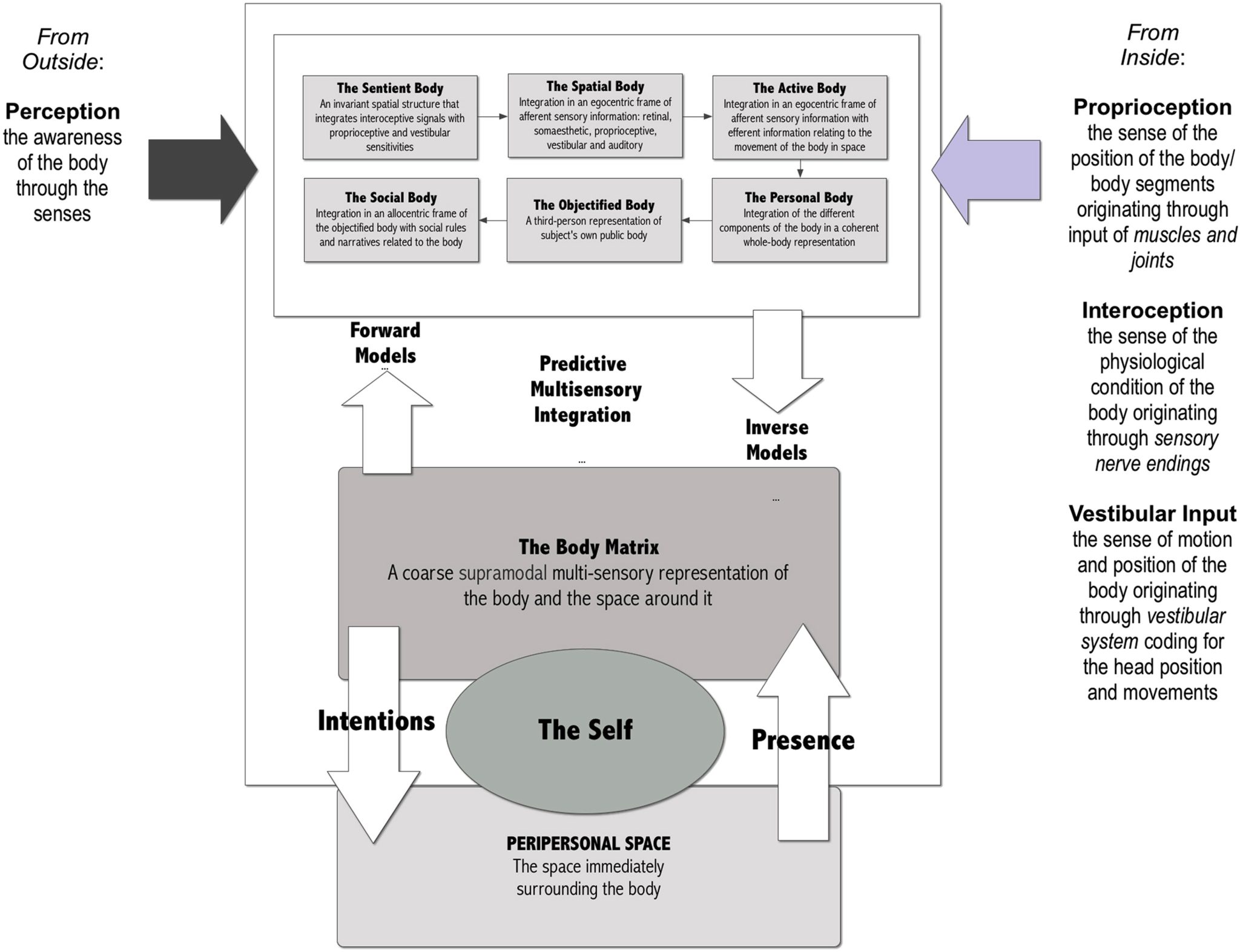
Figures 2: Ontogenic development of body representations.
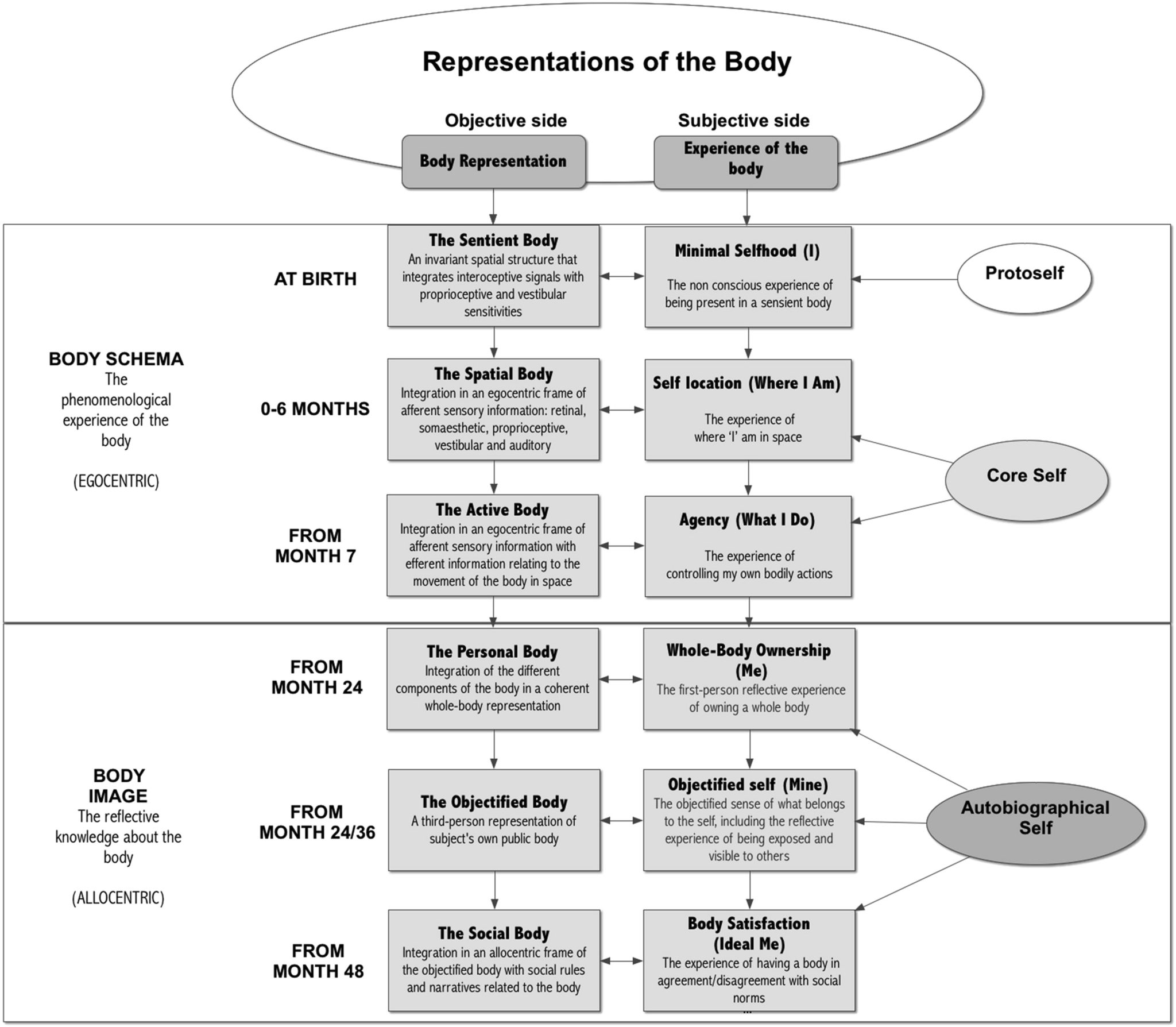
Source:
Riva, G 2018, The neuroscience of body memory: From the self through the space to the others. Cortex; a journal devoted to the study of the nervous system and behavior, 104, 241–260.
Foucault’s floating vessel analogy for understanding heterotopias
The changing boat orientations randomised the performers’ framing of a scene, as they scanned the shoreline to interpret mangrove root systems. Scored elements invited further head movements beyond the performers control such as changing their fields of view that was determined by a random number generator. This encouraged them to look at particular points in mangrove which they may not have looked before. The result is revelling in the somatic effects of bodily earthly sounds. I use the term ‘biological automavison’ based on a camera technique by director Lars Von Trier that is subverted into a method for navigating complex living systems.
Cinematic dispositif in ecology
There is also the concept of the cinematic dispositif comprising of people, production, transmission, distribution, staging, costumes, cutting, editing, and grading; and just like cinema, a river is also a production, of organic processes, tides, temperatures, gusts of wind. It is also a production of knowledge structures, institutions, administrative mechanisms, social norms of behaviour, all influencing how the river is shaped.

Pneumatophore – Cross-section
Reference
Parente, A. & de Carvalho, V 2008, Cinema as dispositif: Between Cinema and Contemporary Art. Cinémas, 19(1), 37–55. https://doi.org/10.7202/029498ar
Stanger, Arabella (2016) Heterotopia as choreography: Foucault’s sailing vessel. Performance Research, 21 (3). pp. 65-73. ISSN 1352-8165
Marine Education Society of Australasia: http://www.mesa.edu.au/mangroves/mangroves02.asp
Promotional image used for the video-essay


